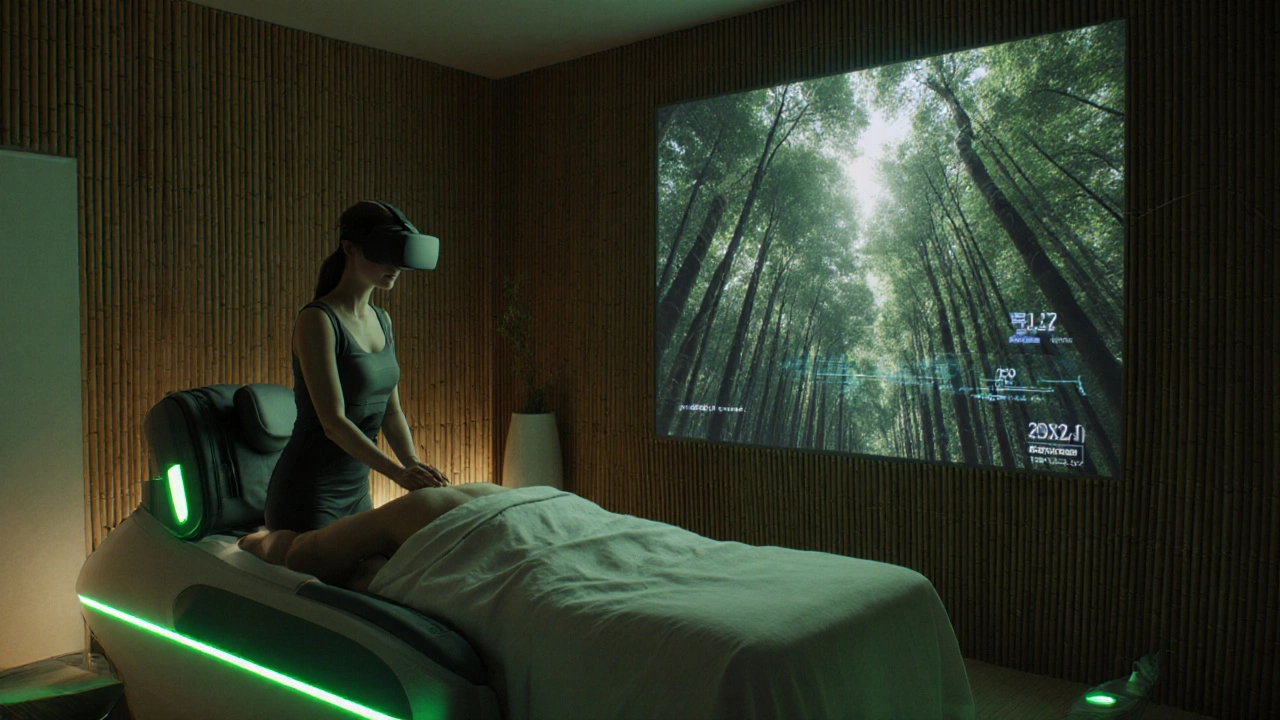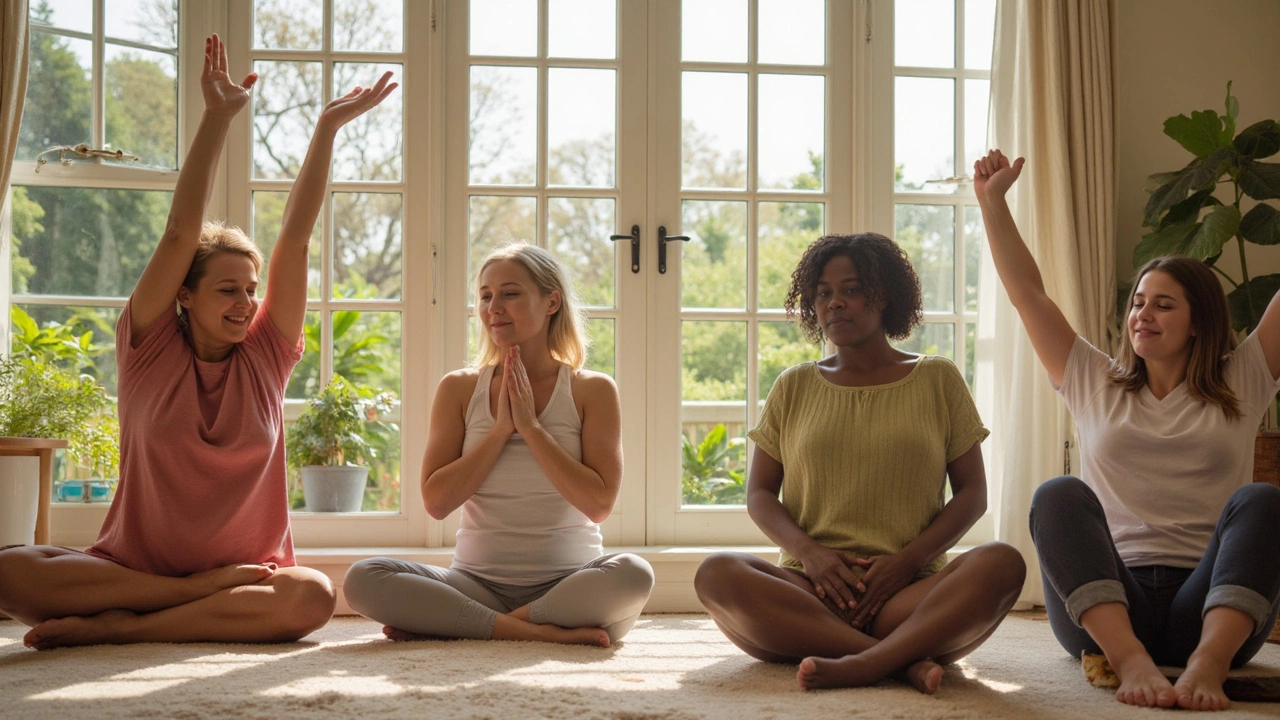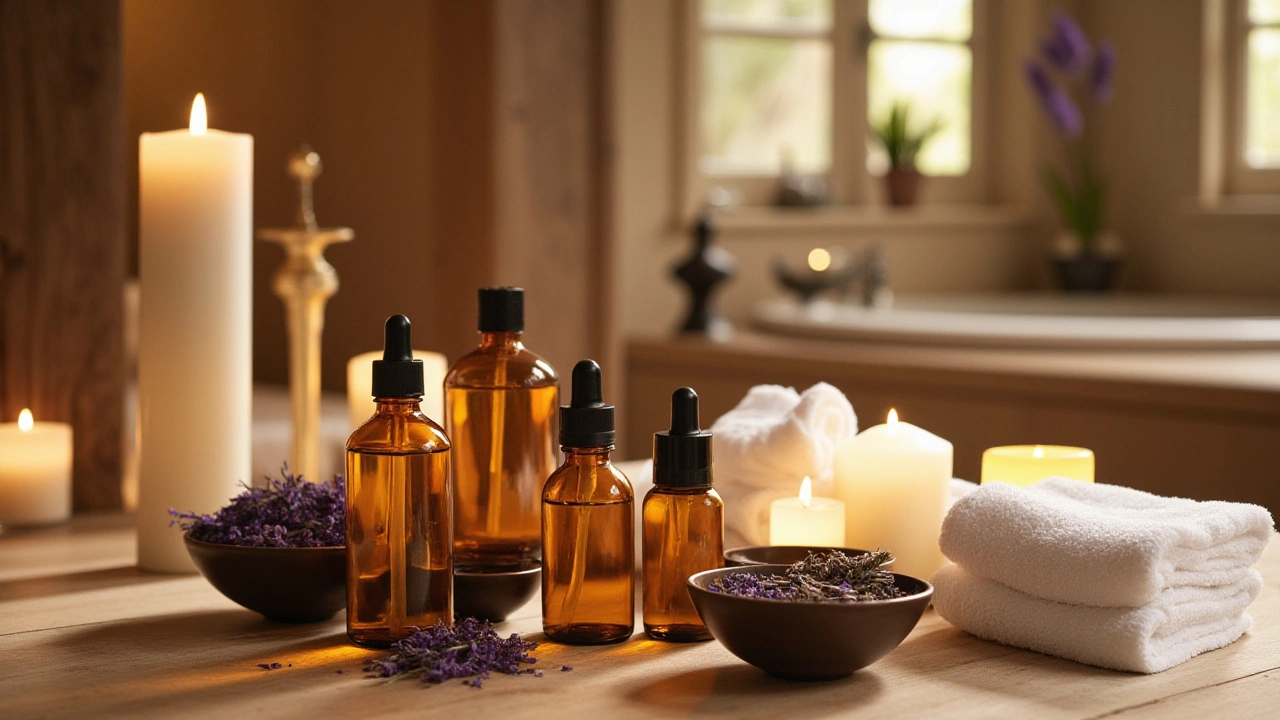Full Body Massage History & Evolution

When people think of full body massage, they often picture a tranquil spa room, soft music, and a therapist gliding hands over muscle tissue. But the practice stretches back millennia, weaving through ancient temples, royal courts, and modern science. Below is a concise journey from its humble origins to today’s high‑tech treatments, plus practical takeaways for anyone curious about this timeless art.
Ancient Roots: Healing Touch in Early Civilizations
Full Body Massage is a therapeutic manual technique that applies systematic pressure, kneading, and stretching across the entire musculature of the body. Historically, it served both medicinal and ritual purposes, often linked to spiritual well‑being. In Ancient Egypt, wall paintings from 2500 BC reveal priests massaging pharaohs to relieve fatigue after long hunts. Similarly, the Hippocratic Corpus (5th century BC) describes “rubbing” as a method to balance humors and restore health.
Chinese Tui Na documented in the Huangdi Neijing (c. 200 BC) includes full‑body strokes, pressure on meridians, and joint manipulation-principles still echoed in modern techniques.
Classical and Medieval Advancements
The Roman Empire institutionalized massage in public baths. Citizens would alternate soaking in hot water with a therapist’s “friction” to improve circulation, a practice termed Balneotherapy. In medieval Europe, monasteries preserved Greek and Arab texts, where scholars like Ibn Sīnā (Avicenna) highlighted massage for post‑surgical recovery.
During the Islamic Golden Age, physicians blended Persian herbal oils with full‑body techniques, giving rise to aromatic compounds that later influenced Aromatherapy Massage.
The Renaissance to the 19th Century: From Folk Healing to Formal Study
European physicians of the 16th century began cataloguing massage moves in illustrated manuals. In 1810, Swedish physician Per Henrik Ling introduced a systematic series of long strokes, kneading, and friction-what we now call Swedish Massage. Ling’s “gymnastic” approach transformed massage from a folk remedy into a disciplined health practice.
Meanwhile, Japanese and Thai traditions-such as Thai Massage, which combines assisted yoga stretches with rhythmic pressure-began to travel west via colonial encounters, adding exotic flavors to the growing repertoire.
Birth of Modern Full‑Body Massage: The 20th‑Century Boom
In the early 1900s, a wave of physicians and physiotherapists embraced massage for injury rehabilitation. The development of Deep Tissue Massage in the 1970s targeted fascia and connective tissue, aligning with emerging sports science. Simultaneously, Ayurvedic practitioners introduced Abhyanga, a oil‑laden full‑body ritual meant to balance doshas.
World War II saw military medics using full‑body techniques to treat trench foot and stress‑related tension, cementing massage as a recognized therapeutic modality within Western medicine.

Global Spread & Cultural Variations
By the late 20th century, the West’s fascination with Eastern wellness sparked hybrid styles. Sports Massage merged Swedish strokes with muscle‑specific pressure, catering to athletes. Lymphatic Drainage Massage emerged from French physiotherapy, using light, rhythmic movements to stimulate lymph flow.
Today, spa culture worldwide offers curated packages that blend full‑body Swedish, aromatherapy, and hot‑stone modules, catering to both relaxation seekers and health‑focused clients.
Scientific Validation & Health Benefits
Modern research, driven by institutions like the National Center for Complementary and Integrative Health, confirms that regular full‑body massage can lower cortisol, boost serotonin, and improve heart‑rate variability. A 2023 meta‑analysis of 38 randomized trials found a statistically significant reduction in chronic low‑back pain after eight weekly sessions.
Beyond pain relief, massage improves lymphatic clearance, reduces edema, and enhances skin elasticity-benefits that have been quantified using ultrasound imaging and blood‑flow Doppler studies.
Contemporary Practices & Emerging Trends
Technology is reshaping massage delivery. Devices like pneumatic “massage chairs” simulate human pressure patterns, while apps enable clients to customize session length, pressure intensity, and music playlists. Some clinics integrate biofeedback sensors, allowing therapists to adjust techniques in real time based on muscle tension readings.
Eco‑conscious consumers are also influencing the market: sustainably sourced essential oils, biodegradable linens, and zero‑waste spa designs are becoming standard expectations for modern full‑body experiences.

Future Directions: What’s Next for Full‑Body Massage?
Looking ahead, researchers are exploring the synergy between massage and regenerative medicine. Preliminary trials combine full‑body massage with platelet‑rich plasma (PRP) injections to accelerate tissue healing after sports injuries. Meanwhile, virtual‑reality (VR) environments aim to deepen the relaxation response by immersing clients in nature scenes while therapists work.
Regulatory frameworks are also tightening. In Australia, the Australian Massage Association (AMA) has introduced tiered certification pathways, ensuring practitioners meet evidence‑based standards for safety and efficacy.
Practical Checklist for Therapists and Clients
| Aspect | What to Verify | Common Pitfalls |
|---|---|---|
| Therapist Credentials | AMA registration, specialized training in full‑body techniques | Unverified certifications, outdated methods |
| Client Health Screening | Medical questionnaire, contraindications (e.g., thrombosis) | Skipping assessment, ignoring medication interactions |
| Environment | Clean linens, appropriate room temperature (24‑26 °C) | Overly hot rooms, strong artificial scents |
| Technique Selection | Match style (Swedish, Deep Tissue, etc.) to client goals | One‑size‑fits‑all approach |
| Post‑Session Care | Hydration advice, gentle stretching recommendations | Leaving client without aftercare guidance |
Frequently Asked Questions
How often should I get a full‑body massage?
For general wellness, a monthly session works well. If you’re targeting chronic pain or athletic recovery, weekly or bi‑weekly appointments are often recommended by therapists.
Is full‑body massage safe during pregnancy?
Yes, when performed by a therapist trained in prenatal massage. Techniques avoid the abdomen and focus on the back, legs, and shoulders, helping reduce swelling and back pain.
What’s the difference between Swedish and deep‑tissue full‑body massage?
Swedish massage uses long, flowing strokes to promote relaxation and circulation. Deep‑tissue applies slower, firm pressure targeting deeper muscle layers and fascia, often to address chronic tension.
Can massage help with anxiety?
Research shows that a 60‑minute full‑body session can lower cortisol by up to 31% and increase serotonin, leading to measurable reductions in self‑reported anxiety levels.
Do I need to tip my massage therapist?
Tipping is customary in many countries (10‑20% of the session fee). However, if the therapist is salaried or the service is included in a spa package, a tip may be optional.



Swapnil Dicholkar
October 21, 2025 AT 13:41Love how this piece weaves history with modern science 😊
Nitz Shofner
November 4, 2025 AT 17:29Ancient Egyptian therapists used rhythmic strokes to ease hunters' fatigue-evidence that systematic pressure isn’t new.
Naomi Dietrich
November 18, 2025 AT 22:17The saga of full‑body massage reads like a chronicle of human ingenuity.
From stone‑age bone tools to AI‑driven pressure mats, each era has repurposed touch as a therapeutic engine.
Ancient Egyptian wall paintings already depict royal masseurs wielding herbal oils, a practice that pre‑dated Hippocratic humoral theory.
The Greeks codified “rubbing” into medical textbooks, insisting that manual manipulation could restore the body's equilibrium.
Roman balneotherapy turned public baths into grand laboratories where steam, water, and friction mingled to stimulate circulation.
The medieval monasteries, despite their cloistered lives, preserved these texts and passed them to Renaissance physicians hungry for empirical data.
When Per Henrik Ling introduced systematic Swedish strokes, he transformed massage from superstition into a disciplined kinetic science.
The 20th‑century surge in physiotherapy integrated deep‑tissue techniques with sports medicine, carving a niche for athletes craving rapid recovery.
Yet today’s commercial spas often dilute this heritage into generic “relaxation sessions” that lack rigorous assessment.
The proliferation of massage chairs, while convenient, cannot replicate the nuanced feedback loop between therapist and client.
Biofeedback sensors promise to bridge that gap, yet they still rely on algorithms that ignore individual neurophysiological variance.
Moreover, the regulatory vacuum in many countries permits under‑trained practitioners to offer high‑pressure treatments that risk injury.
Evidence‑based studies consistently show that proper client screening and therapist certification cut adverse events dramatically.
Ignoring these safeguards not only endangers health but also tarnishes the centuries‑old reputation of touch therapy.
Therefore, practitioners and consumers alike must demand transparency, scientific validation, and ethical standards if this ancient art is to thrive in the modern age.
brandon garcia
December 3, 2025 AT 03:05Whoa, that deep dive totally fires me up! 🌟 The way you linked ancient stone‑age rituals to AI‑driven mats is pure gold. I love the punchy sentence about biofeedback-makes me want to try a sensor‑enhanced session right now. And that call for transparency? Spot on. Keep dropping those knowledge bombs, because the more we know, the better we can protect this timeless art. 🎉